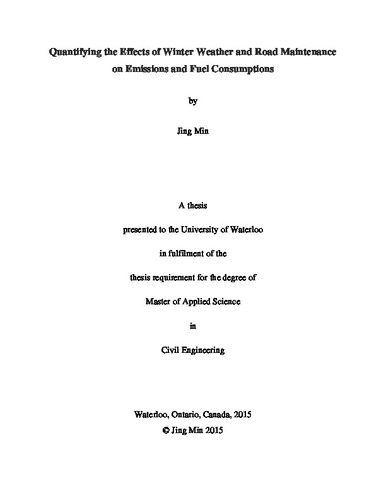| dc.description.abstract | Winter road maintenance (WRM) has significant benefits including improving road safety and reducing traffic delay caused by adverse weather conditions. It has also been suggested that WRM is beneficial in terms of reducing vehicular air emissions and fuel consumption because snow and ice on the road surface often cause drivers to reduce their vehicle speeds or to switch to high gears, thus decreasing fuel combustion efficiency of engines. However, there has been very limited information about the underlying relationship, which requires to quantify this particular benefit through a winter road maintenance program. This research is focused on establishing a quantitative relationship between winter road maintenance and vehicular air emissions.
Most studies related RSC, fuel consumption and vehicular emission used either lab collected or real-world collected sample data at several specific sites and hours, which usually have small sample sizes. Speed distribution models were developed for the selected highways using data from 22 road sites across the province of Ontario, Canada.
Through an intermediate variable – vehicle speed, a quantitative relationship was established between winter road surface condition and vehicular emissions including GHG, harmful gases and PM, and energy consumption. Using multiply linear regression, a speed distribution model, including hourly average speed model and speed variation model, established as a function of various winter weather factors and a measure of road surface condition under the assumption of normal distribution. The vehicular air emissions under different road surface conditions were calculated by coupling the speed models with the engine emission models integrated in the emission estimation model - MOVES.
It is found that, on the average, 10% improvement in road surface condition could result in approximately 2% reduction in air emissions. Application of the proposed methodology is demonstrated through a case study to analyse the air emission and energy consumption effects under specific weather events. The results show that better road surface condition (RSC) can reduce both the vehicular air emissions and energy consumption, and the effects of an earlier WRM operation would last longer and affect more during a snow event. | en |

